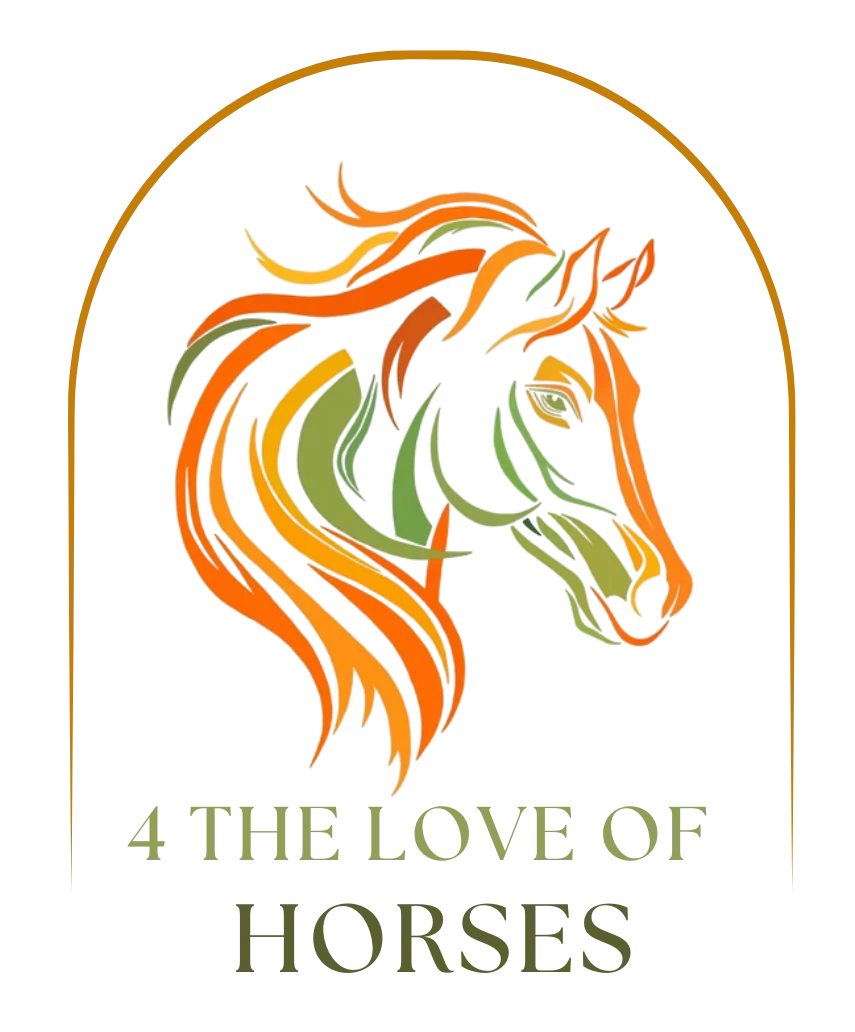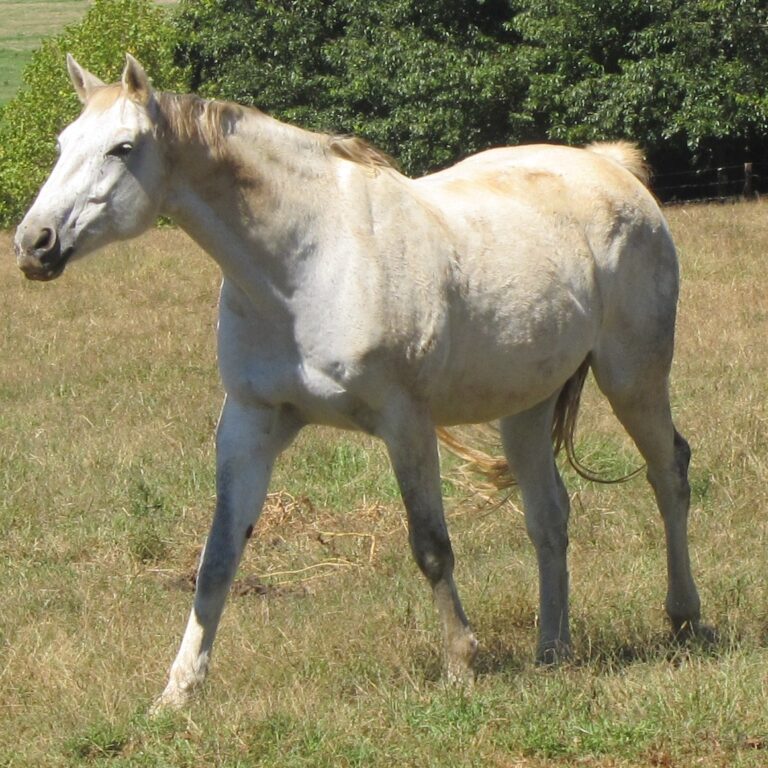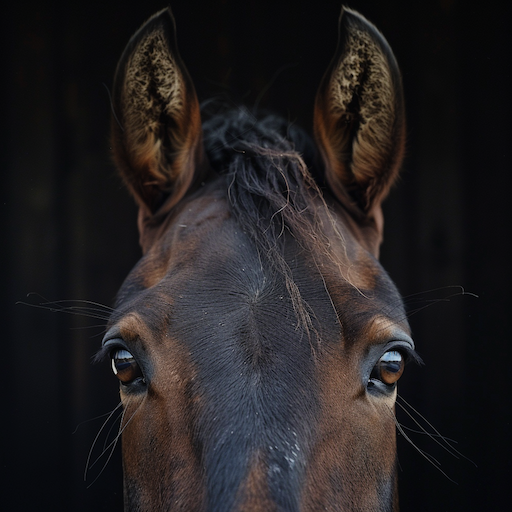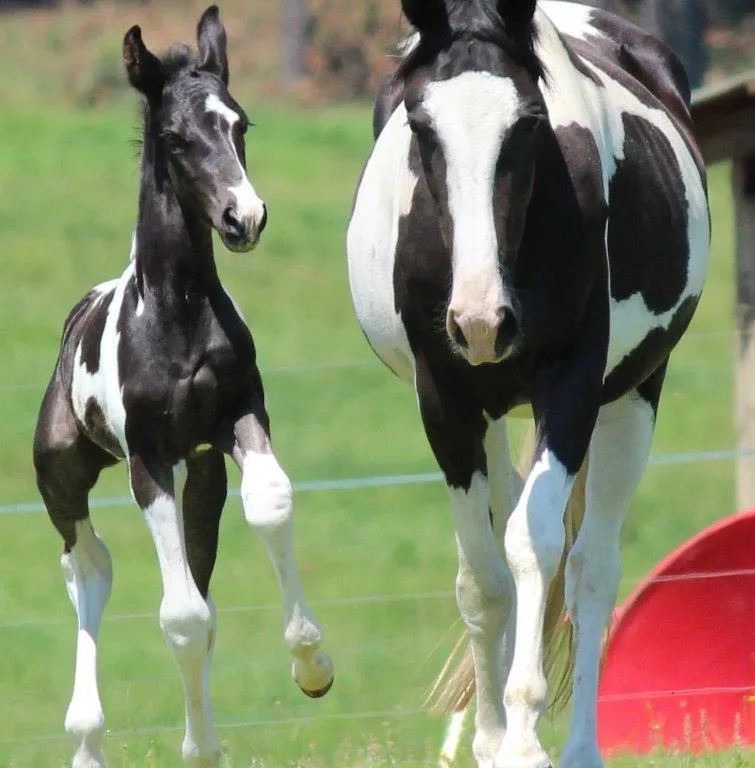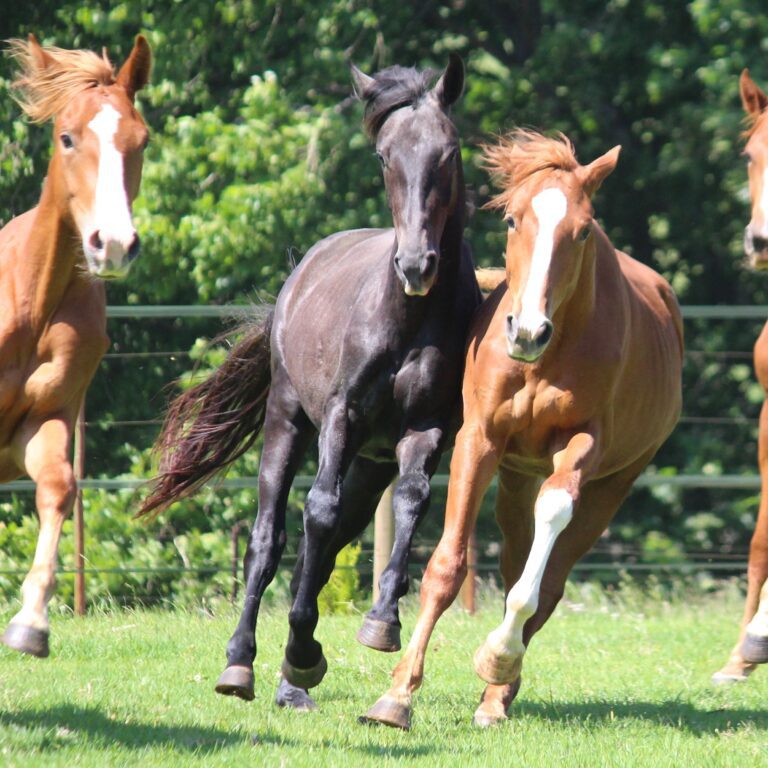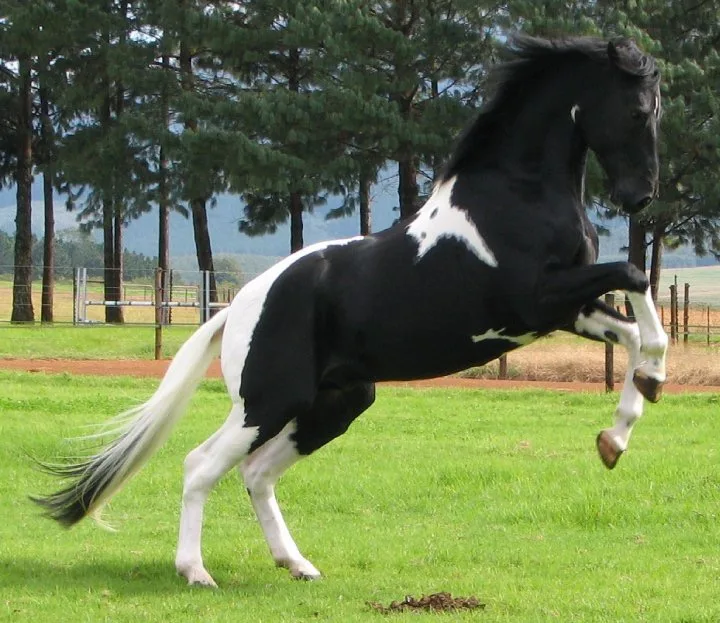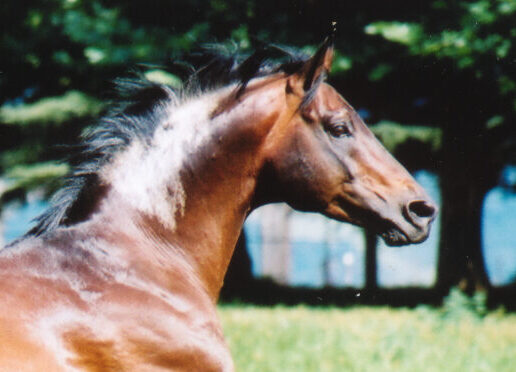Equine Bonds: Exploring the Social Dynamics Among Horses
Horses are highly social animals that thrive in the company of their own kind. Understanding the intricacies of their social structure is fundamental for horse owners and enthusiasts alike, offering insights into the dynamics that govern their behavior within a herd.
Herd Mentality
Horses are inherently herd animals, a trait inherited from their wild ancestors. In the wild, herds provide safety, shared vigilance against predators, and a structured environment for daily activities. Even in domestic settings, this herd mentality persists and significantly influences equine behavior.
Family Units and Hierarchies
Equine social structures often resemble a hierarchy, where individuals establish roles based on dominance and submission. The hierarchy is not merely about power dynamics; it serves to maintain order and structure within the herd, ensuring the well-being of all its members.
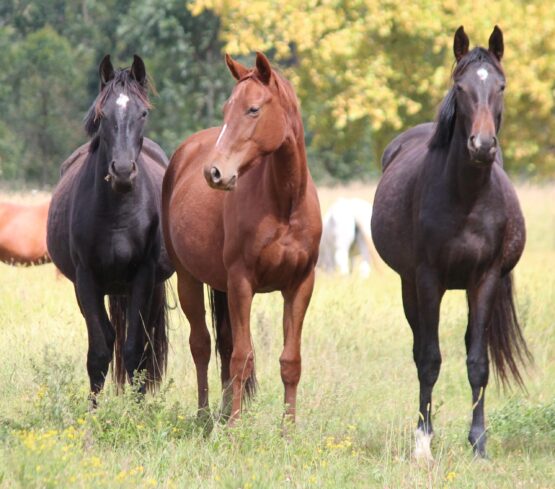
Leadership Dynamics
Within a herd, there is typically a lead horse, often referred to as the “alpha” or dominant horse. This horse assumes a leadership role, guiding the herd’s movements and decisions. The alpha is not necessarily the strongest physically but often possesses strong social skills and confidence.
Communication and Interaction
Equine socialization relies heavily on non-verbal communication. Horses use a complex language of body gestures, facial expressions, and vocalizations to convey their emotions, establish hierarchy, and maintain social bonds. Understanding these cues is crucial for interpreting their social dynamics.
Role of Age and Gender
Age and gender play significant roles in equine social structure. Younger horses may occupy lower positions in the hierarchy until they mature, and gender dynamics can influence the hierarchy’s stability. Mares and geldings may have different social dynamics compared to stallions.
Impact of Domestication
While domestication has altered some aspects of equine social structure, the fundamental need for social interaction remains. Domestic horses often form “pseudo-herds” with fellow equines or even other animals, mirroring their natural inclination for companionship.
In essence, the equine social structure is a dynamic and nuanced system shaped by instincts, individual personalities, and environmental factors. Recognizing and respecting these social dynamics is essential for providing a supportive and enriching environment for our equine companions. In the subsequent sections, we will delve deeper into specific aspects of equine social behavior, exploring hierarchy, friendships, and interactions within the herd.
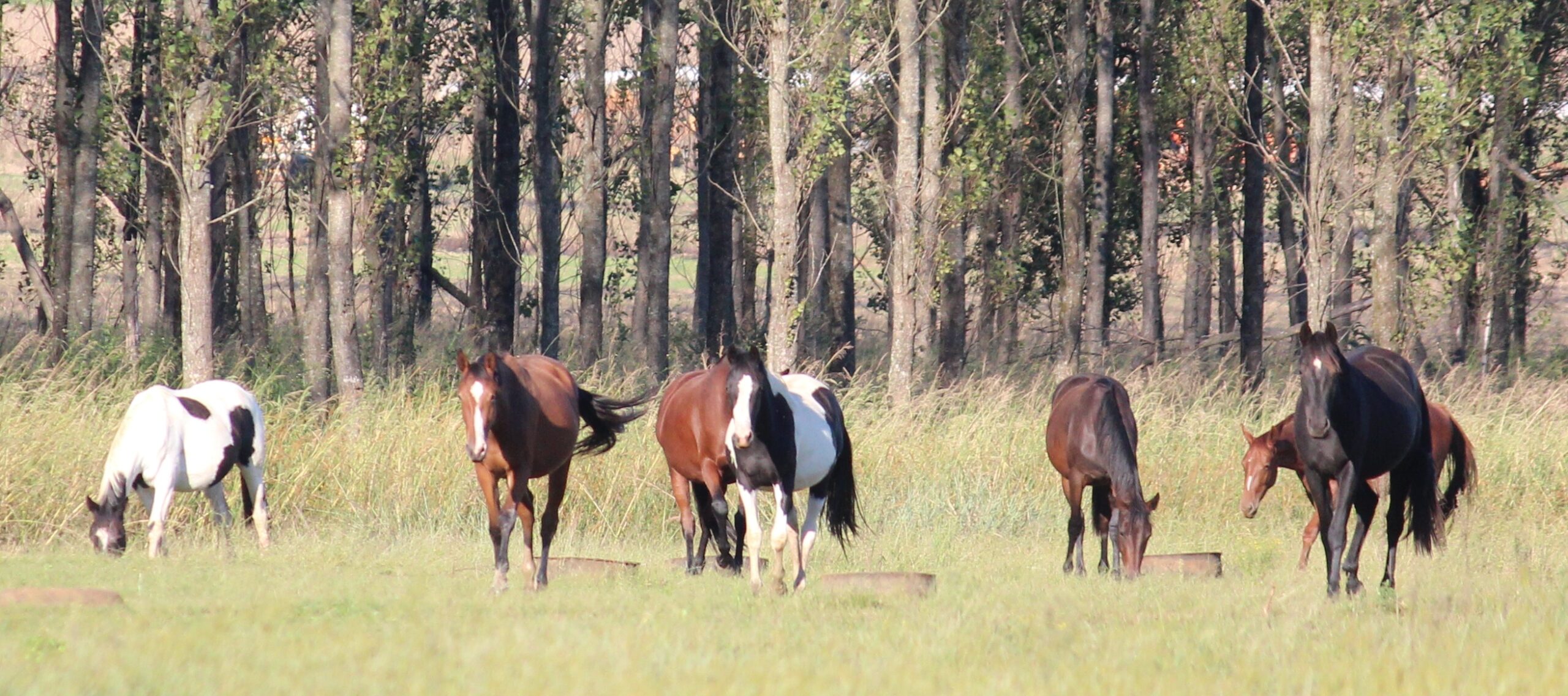
Hierarchy in Horse Herds
Understanding the Social Structure
Hierarchy in horse herds refers to the established order of dominance and submission among individual members. This social structure is ingrained in their instincts and serves various purposes within the group.
Dominance and Submission Roles
The hierarchy designates roles of dominance and submission, with each horse occupying a specific position. The dominant horses, often led by an alpha or lead horse, hold sway over others, influencing decisions and movements within the herd. Submissive horses yield to the authority of their dominant counterparts.
Factors that Influence Hierarchy
Age and Gender Dynamics
- Younger Horses: In horse herds, age plays a pivotal role in determining hierarchy. Younger horses typically occupy lower positions until they mature. As they age, they may challenge for higher ranks.
- Gender Influences: Gender dynamics contribute to the hierarchy. While mares and geldings may establish relatively stable hierarchies, stallions often display more dynamic and fluid structures, influenced by breeding behaviors.
Individual Personalities and Temperaments
- Assertiveness: Horses with more assertive and confident personalities may ascend to higher positions in the hierarchy. Leadership qualities, displayed through assertive body language and decision-making, contribute to their dominance.
- Submissiveness: Conversely, horses with more submissive temperaments may assume lower positions, deferring to their more dominant counterparts.
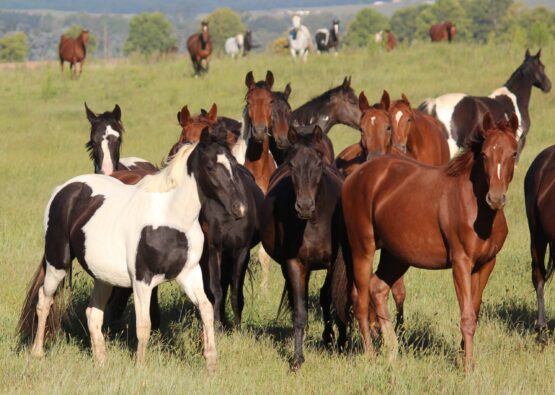
Importance of Hierarchy
Maintaining Order and Safety
- Predatory Defense: In the wild, a hierarchical structure is crucial for the herd’s survival. The lead horse takes on a protective role, making decisions that ensure the safety of the group against potential predators.
- Social Order: Hierarchy establishes social order within the herd, minimizing conflicts and promoting a structured environment for daily activities such as grazing and movement.
Communication and Decision-Making
- Communication Signals: Horses use various communication signals, including body language and vocalizations, to assert or acknowledge their positions in the hierarchy. These signals contribute to efficient communication within the herd.
- Decision-Making Process: The hierarchy influences decision-making processes, such as determining when to move, graze, or rest. The alpha’s decisions often guide the herd’s actions.
Hierarchy in Domestic Settings
- Impact of Domestication: While domestication has altered some aspects of equine behavior, including hierarchy, the fundamental need for a social structure remains. Domestic horses often form hierarchies within groups, whether in a pasture or stable setting.
Understanding the nuances of hierarchy in horse herds provides valuable insights into their social dynamics. As we navigate the layers of dominance, submission, and cooperation, we gain a deeper appreciation for the intricacies that define the equine world. In the subsequent sections, we will further explore communication within the herd, the formation of friendships, and interactions that shape the social fabric of horse communities.
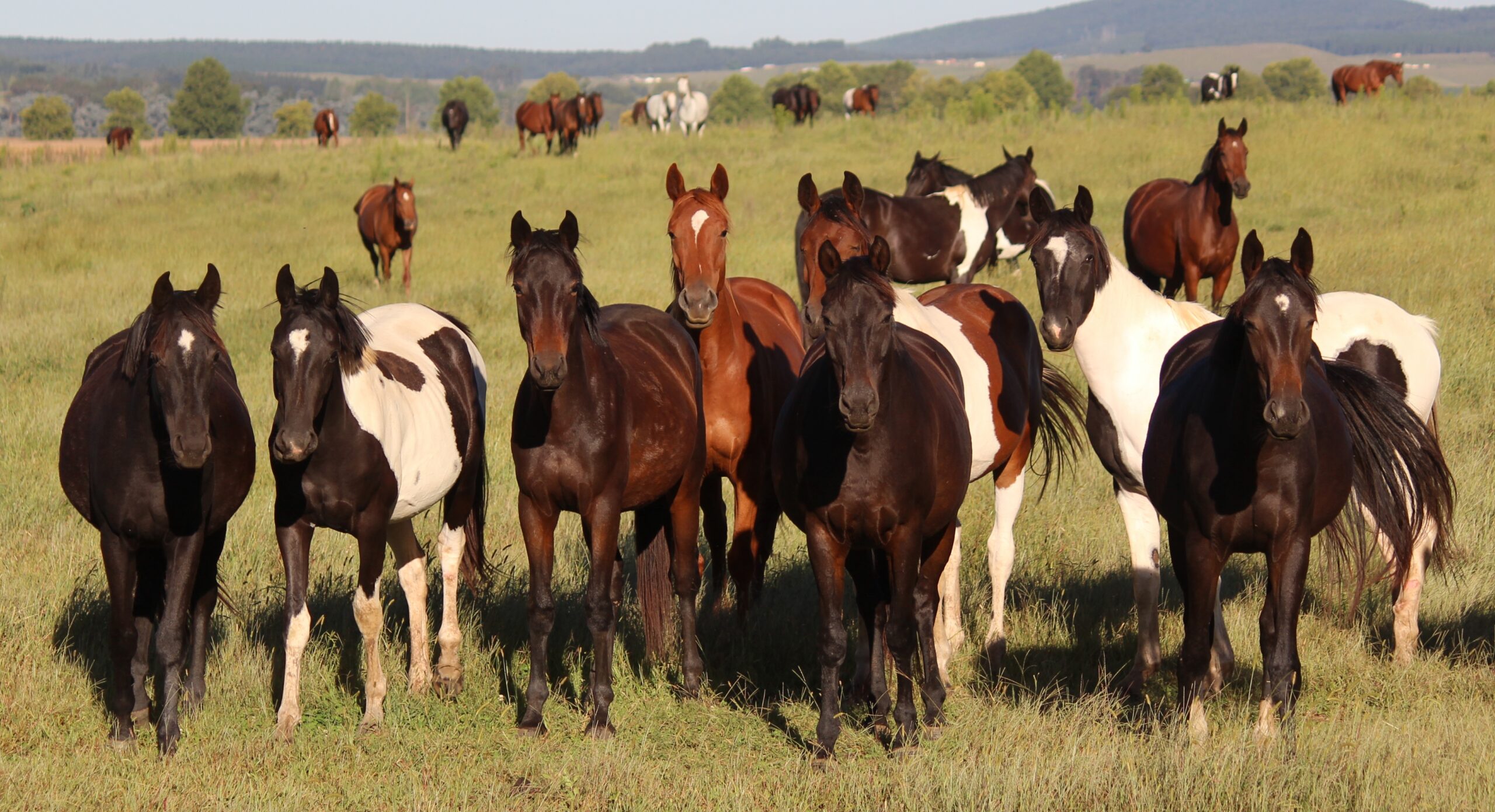
Communication within a Herd
Exploration of Body Language
- Non-Verbal Communication: Horses are masterful communicators through non-verbal cues. Understanding their body language is key to deciphering their emotions and interactions within the herd.
- Ear Positions: The position of the ears often conveys mood and attention. Forward-pointing ears may signal curiosity, while flattened ears can indicate discomfort or aggression.
Facial Expressions
- Softness vs. Tension: Facial expressions provide a window into a horse’s emotional state. Soft eyes, relaxed features, and a gently arched neck indicate contentment, while tense facial muscles may signify stress or discomfort.
Tail Movement
- Swishing and Position: The movement of the tail is a crucial communication tool. A swishing tail may indicate irritation or annoyance, while a raised tail can signal excitement or alertness.
Vocalizations
Overview of Common Vocalizations:
- Neighs and Whinnies: Horses use neighs and whinnies to communicate over distances, expressing excitement, calling for attention, or signaling distress.
- Snorts: A forceful exhalation through the nostrils, a snort can convey alertness, curiosity, or a response to a perceived threat.
- Blowing: A gentle blowing sound often signifies relaxation and contentment.
Understanding the Meanings:
- Context Matters: The context in which vocalizations occur is crucial for interpretation. A neigh during feeding time may express eagerness, while the same sound when separated from the herd may convey anxiety.

Importance of Communication
Establishing and Maintaining Bonds:
- Social Bonds: Clear communication fosters social bonds within the herd. Mutual understanding through body language and vocalizations strengthens the connections between individual members.
Navigating Social Hierarchies:
- Asserting Dominance: Horses use communication to assert dominance or submit to higher-ranking individuals. Understanding these signals helps maintain harmony within the hierarchy.
Ensuring Safety and Coordination:
- Predator Alert System: Horses rely on communication to alert the herd to potential threats. A snort or elevated head may signal a perceived danger, prompting the herd to adopt a vigilant stance.
- Coordinated Movements: Communication plays a role in coordinating movements within the herd. Signals from the alpha or lead horse guide the group in activities such as grazing and resting.
In essence, communication within a horse herd is a multifaceted dance of body language and vocal expressions. Each interaction contributes to the cohesive fabric of the herd, reinforcing social bonds, maintaining order, and ensuring the collective well-being of its members. As we delve further into the social dynamics of equine communities, we’ll explore the formation of friendships, the significance of play, and the intricacies of individual interactions that shape the rich tapestry of the horse world.

Friendships and Social Bonds
The Significance of Social Bonds:
- Inherent Need for Companionship: Horses, being social animals, have an inherent need for companionship. Social bonds fulfill not only emotional needs but also contribute to the overall well-being of each individual.
Factors Contributing to Social Bonds:
- Shared Experiences: Horses often form bonds through shared experiences, whether it be grazing together, navigating challenges, or engaging in playful activities. These shared moments create a sense of familiarity and trust.
- Time Spent Together: The amount of time horses spend together influences the strength of their social bonds. Consistent interaction fosters a sense of community and reinforces the connections between individuals.
Role of Play and Mutual Grooming
Exploration of Play as a Social Activity:
- Playfulness as Bonding: Play is a vital aspect of equine social interaction. Horses engage in playful behaviors such as chasing, nipping, and rolling as a means of bonding. These activities strengthen their social connections and contribute to a positive group dynamic.
- Formation of Hierarchies through Play: Play can also play a role in establishing and reinforcing social hierarchies within the herd. Through play, horses express and test their roles within the group.
Significance of Mutual Grooming
- Grooming as a Social Behavior: Mutual grooming, or allogrooming, is a behavior where horses use their mouths to groom each other’s coats. This serves not only as a hygienic practice but also as a powerful social bonding activity.
- Trust and Cooperation: Mutual grooming reinforces trust and cooperation within the herd. It is a behavior often observed between horses with strong social bonds, and it helps maintain a harmonious social environment.
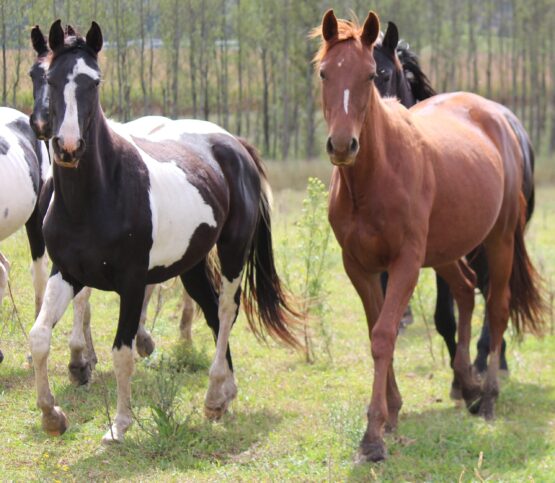
Human-Horse Interactions
Impact of Human Presence on Social Bonds
- Building Trust with Humans: Horses can extend their social bonds to include humans. Positive interactions with caretakers and handlers contribute to the development of trust and strengthen the horse-human relationship.
- Recognizing Human as a Companion: Horses often view humans as part of their social circle. Understanding and respecting their social nature enhances the quality of human-horse interactions.
Considerations for Horse Owners
- Group Dynamics in Stables: For horse owners managing multiple horses, fostering a positive group dynamic is essential. Providing adequate space, ensuring sufficient resources, and observing individual preferences contribute to a happy herd.
- Recognizing Individual Preferences: Each horse has unique preferences for social interactions. Some may form close bonds with specific individuals, while others may prefer a more independent existence. Recognizing and respecting these preferences is crucial for their well-being.
In summary, friendships and social bonds are integral components of the equine experience. Whether expressed through playful antics, mutual grooming, or interactions with humans, these bonds contribute to the overall happiness and emotional health of horses. As we further explore the intricate social fabric of the equine world, we’ll delve into interactions beyond the herd and the considerations for horse owners in managing social dynamics within groups.
Nurturing the Heart of Equine Connections
In the tapestry of the equine world, friendships, and social bonds are threads that weave a narrative of companionship, trust, and shared experiences. As we’ve journeyed through the subtle language of horse communication, delving into body language, vocalizations, and the joyous dance of play, we’ve uncovered the profound significance of these bonds.
Friendships among horses extend beyond the practicalities of survival; they form the very fabric of equine societies. Shared grazing moments, the gentle rhythm of mutual grooming, and the spirited play that echoes across pastures contribute to a rich tapestry of relationships that define the herd.
Playfulness, an often overlooked aspect of equine behavior, emerges not merely as a display of exuberance but as a language of connection. Through playful interactions, horses strengthen social hierarchies, express joy, and solidify the bonds that anchor them to their fellow herd members.
Yet, the equine heart is expansive. It extends its affections beyond the confines of the herd, embracing humans as companions in this shared journey. Human-horse interactions, when founded on trust and understanding, become an extension of the social tapestry, enriching the lives of both caretakers and their four-legged friends.
As stewards of these magnificent beings, it is our responsibility to recognize and respect the intricate web of social dynamics that shapes their world. From the alpha’s decisive leadership to the gentle nuzzle exchanged between friends, each interaction plays a role in creating an environment where horses can thrive emotionally and physically.
In concluding our exploration of equine friendships, let us carry forward the wisdom gained from deciphering the language of their hearts. In doing so, we not only honor the essence of what it means to be a horse but also deepen the bonds that make our shared journey through the equestrian world a truly enriching and harmonious experience. To read more about your horse’s emotions read this article.
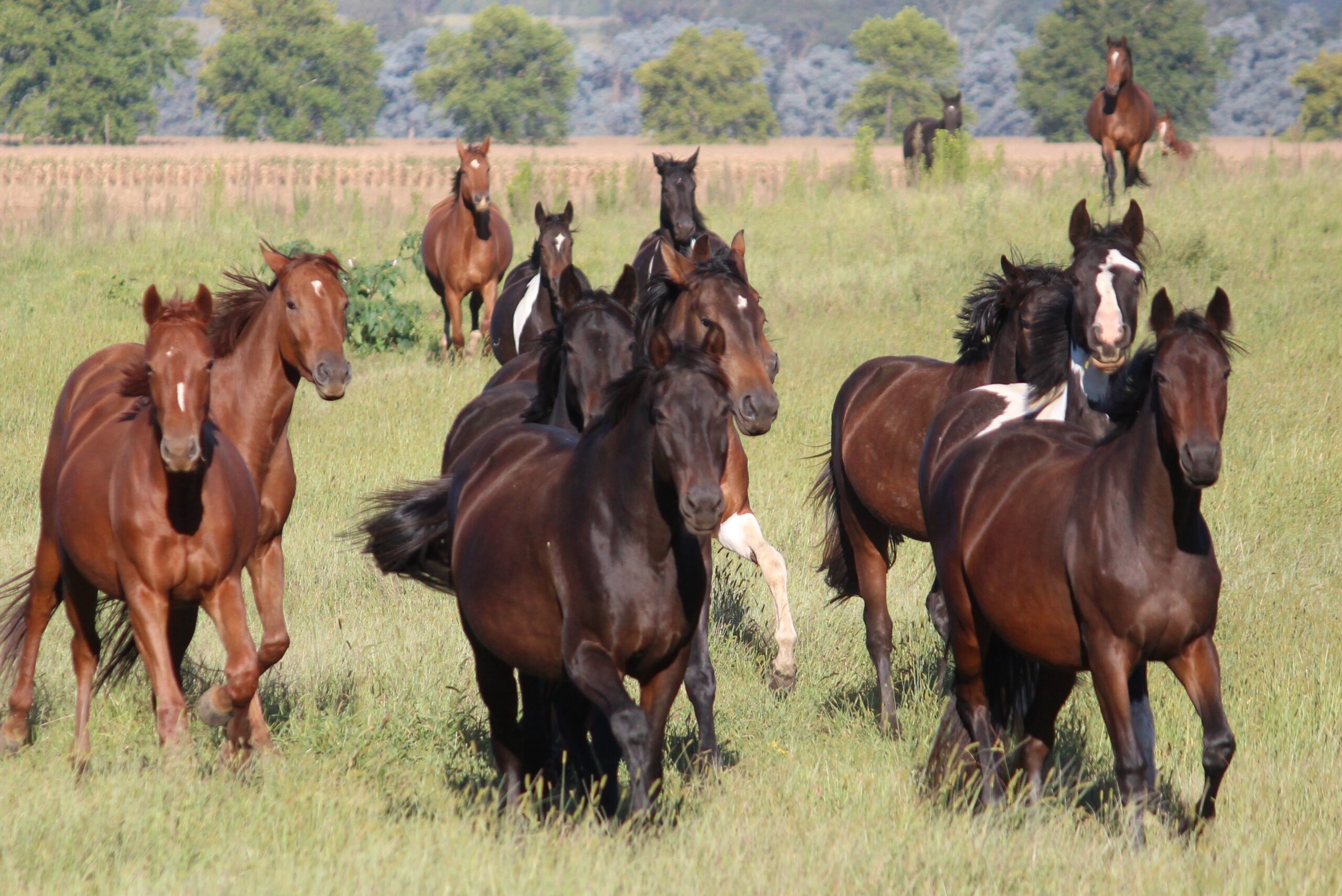
Further reading:
Social Behavior of HorsesHorses are social animals that under feral conditions (or on pasture) live in bands (harems) that consist of several mares, their offspring up to 2–3 yr of …
How horses interact and communicate HORSES are highly sensitive to their environment and surroundings and they can easily become stressed by encountering new situations.
The Pet Professional Guild – Equine Social RelationshipsHorses do not engage in relationships with passing acquaintances. Their social structure is complicated and friends are made as they get to know each other.
